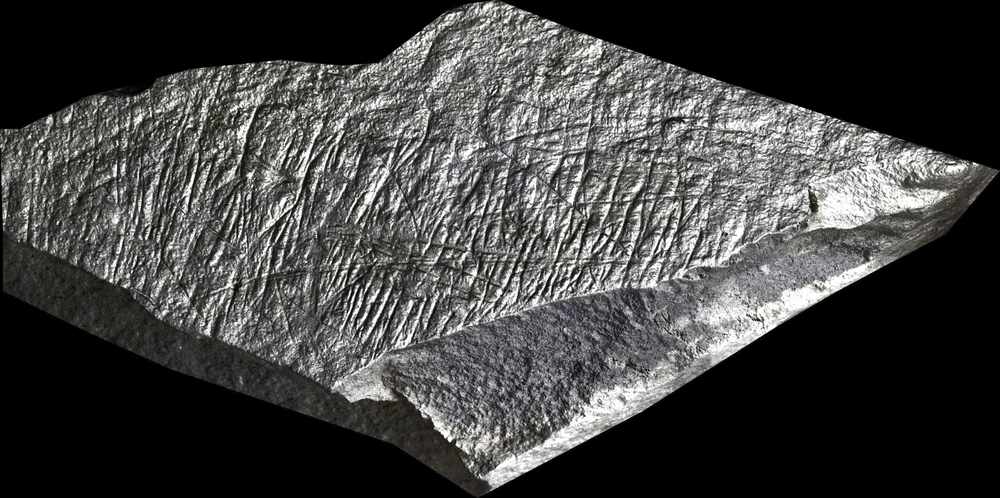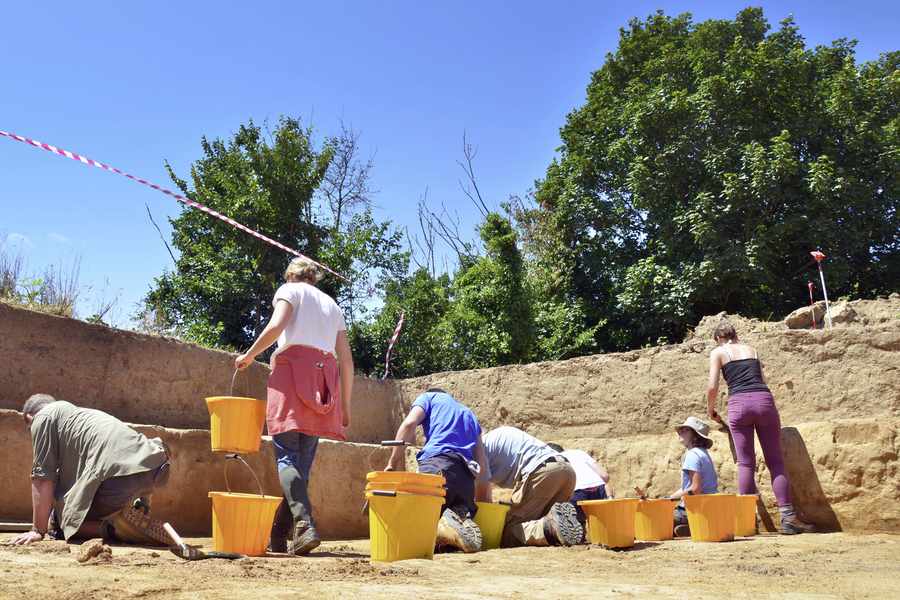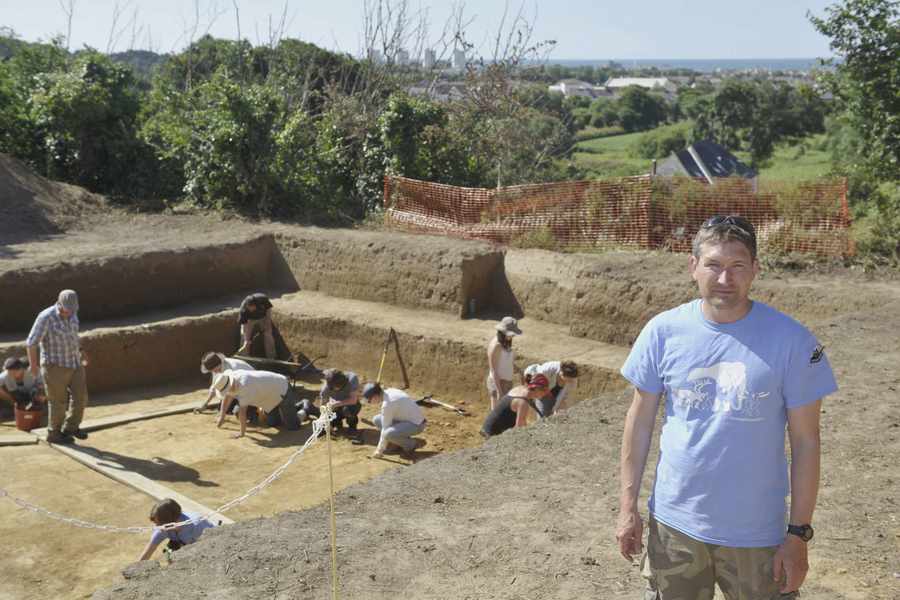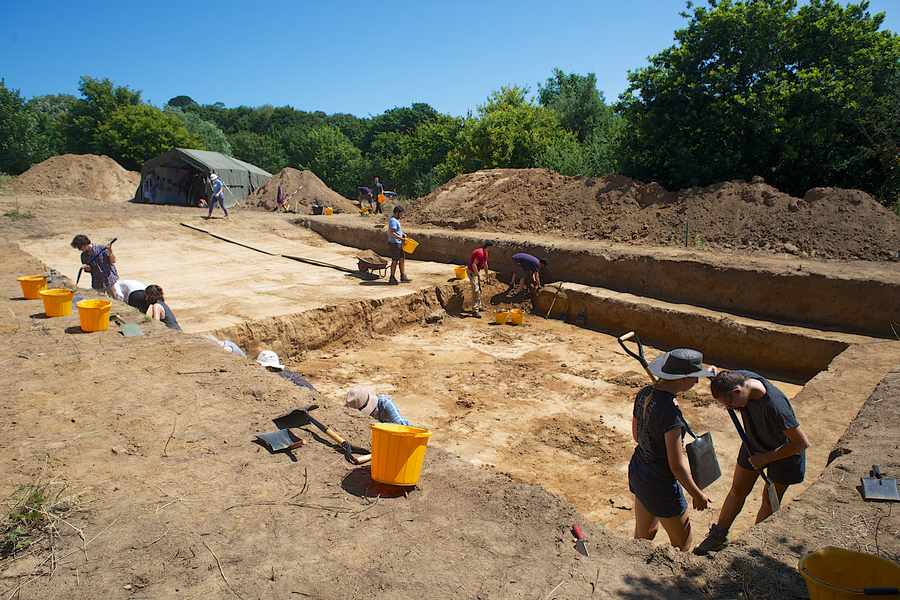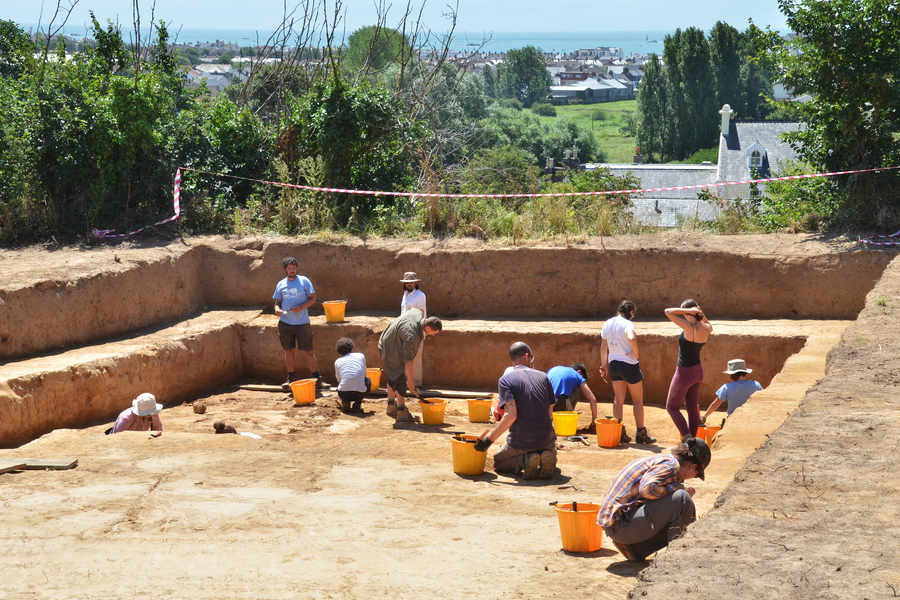Researchers are working to unlock the secrets of what could be evidence of the art from 15,000 years ago.
Fragments of engraved stone were discovered at Les Varines in St Saviour, which UK archaeologists and local experts have been excavating for the past few years, and experts believe that they may have been left by Magdalenian settlers who were known to have lived across Europe thousands of years ago.
- Magdalenian hunters lived 17,000 to 12,000 years ago and existing evidence shows that they produced both representative and abstract art
- Examples of Magdalenian art include batons, figurines and intricately engraved projectile points, as well as sea shells, perforated carnivore teeth (presumably for necklaces) and fossils
- The Magdalenians were a widespread culture associated with deer hunting, but their sites also contain evidence of the hunting of horses and other large mammals
- Settlements have been found from Portugal to Poland
- They lived in cave shelters, but also used tents
It is the latest announcement from a major joint project to re-examine the past and follows the launch of a new exhibition at the Jersey Museum called Jersey: Ice Age Island, where one of
the etched fragments is on show.
Although researchers are still conducting tests to learn more about the items, which are thought to have once formed part of a tablet about the size of an iPad, they believe they could be evidence of early abstract art.
Over the past five years 5,000 scattered stone artefacts have been found at Les Varines, but this summer archaeologists found denser concentrations of tools, burnt bones and, for the first time, etched stone fragments.
Dr Silvia Bello, a post-doctoral research assistant with the Natural History Museum who is studying the fragments, has ruled out the idea that the fragments formed part of something functional like a chopping board.
She said: ‘Engraved works of abstract or figurative art on flat stones are part of the Magdalenian cultural package, and one exciting possibility is that this is what we have here.’
Similar discoveries from the Magdalenian culture have been made across Europe, and if it is concluded that the Jersey fragments are from the same group and time period, the engraved fragments will pre-date the earliest known art in the British Isles.
Jon Carter, the director of Jersey Heritage, said that the Ice Age Island team, which includes local experts and researchers from a range of UK institutions, had been supported by the Tourism Development Fund and Capco Trust to continue to show that the Island, with exceptional sites like Les Varines and La Cotte de St Brelade, is ‘a scientific treasure trove’.
Curator of archaeology for Jersey Heritage Olga Finch said: ‘This is a really exciting time for Jersey archaeology and it fits in well with the new exhibition because you can see one of the engraved pieces there.’
Dr Matt Pope, of the University College London’s Institute of Archaeology, said: ‘Magdalenian hunters made some incredible artwork, but also made abstract art, which is far harder to interpret.
‘But at the moment we are not over-interpreting them.
‘This may be the tip of the iceberg and we are being quite cautious.’
